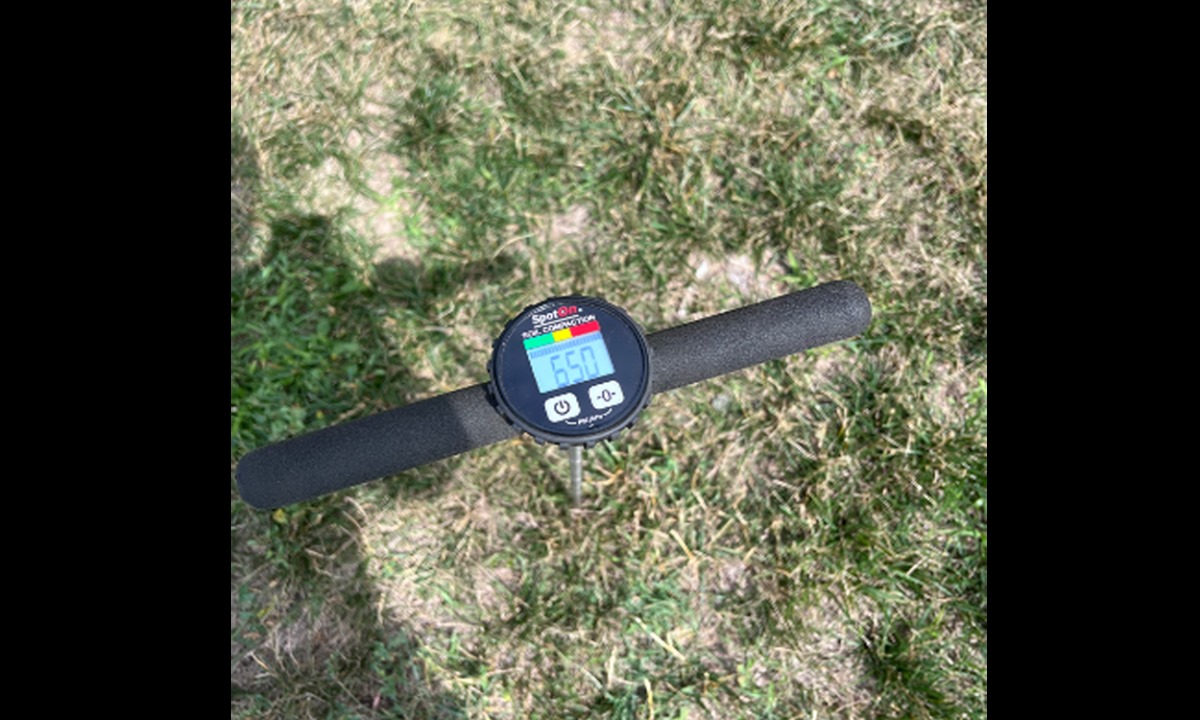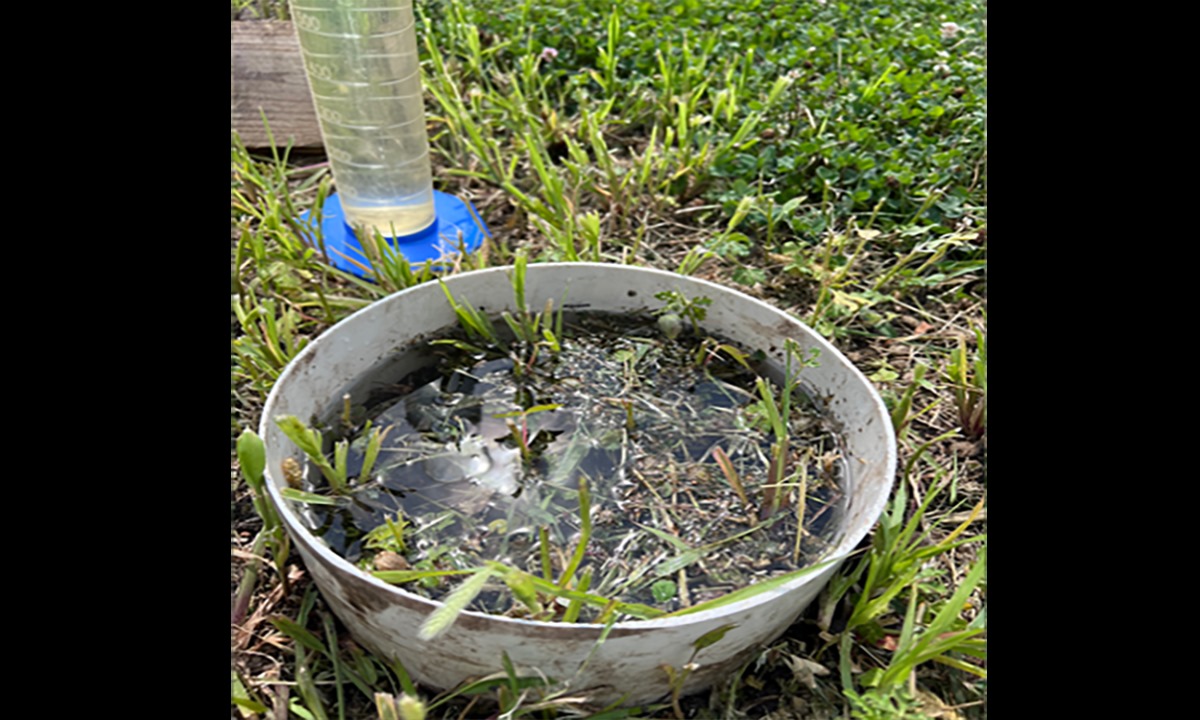PENETROMETER
A penetrometer is a tool used to measure how much pressure it takes to penetrate the soil, hence soil compaction (Figure 3).
This is measured in pounds per square inch (abbreviated as PSI) and can be used to identify how deep plant roots can grow before they are stopped by a compaction layer, often referred to as a plowpan.
To use a penetrometer, the instrument is placed on the ground and slowly pushed into the soil at no more than one inch per second.
Once the desired depth is reached, the metal rod is pulled out of the soil and will read the highest PSI that was read when moving through the soil.

Figure 3. Penetrometer shows a reading of 650 PSI.
INFILTRATION RING
An infiltration ring is a tool that is used to measure the rate at which water can move through the soil (Figure 4).
The ring, which can be metal or plastic, is pounded into the ground one-to-two inches and has a known diameter to calculate the surface area. Once the ring is securely in the ground, it is filled with water to a known point, which is usually marked with a permanent marker. Then, at every minute mark, water is added to the mark using a 1000 milliliter (abbreviated as mL) graduated cylinder. The amount of water added can then be calculated by subtracting the amount of water left in the 1000 mL graduated cylinder from 1000. This is repeated every one-to-five minutes depending on the speed and size of the infiltration ring for at least 30 minutes.
Once the data is collected, the average is taken to measure how quickly water can infiltrate the soil in inches or millimeters per minute or hour. This measurement is helpful when measuring soil health and risk of erosion to topsoil, since low infiltration rates cause water to run across the ground.

Figure 4. Infiltration ring filled with water.
Once the data is collected, the average is taken to measure how quickly water can infiltrate the soil in inches or millimeters per minute or hour. This measurement is helpful when measuring soil health and risk of erosion to topsoil, since low infiltration rates cause water to run across the ground.
Manage Soil Health for Long-term Impacts
Soil health is very important and influences every part of your life, from the air you breathe to the food you eat. Soil helps store carbon in the form of humus and organic matter, filter rainwater that will eventually refill our aquafers, and, most importantly, soil provides nutrients needed to produce the food we eat. Investing in soil health will benefit you and generations to come.